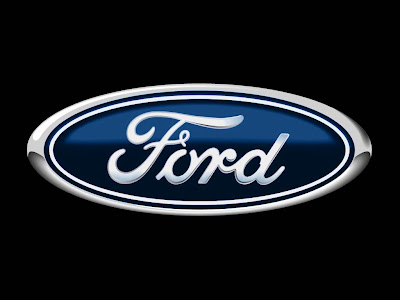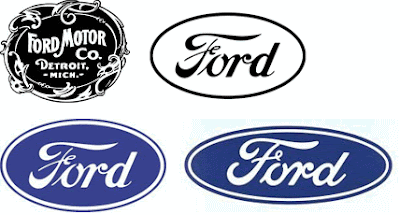

In building Ford's IT infrastructure, the company focused on
implementing a setup that supported the TCP/IP communication protocol
based on the U.S. department of Defense requirements. At those days,
Ford internal network was meant to serve files transfer unlike most
companies that used the network mainly for email communications.
Throughout the 1990's, Ford developed a cost effective Global Enterprise
Network Integration (GENI) process to link all its locations
compromising on the type of the connection and the cabling in favor of
full coverage. During the same time, Ford started building its Web Farm,
which was basically a set of hardware and software managed by a team
for building Ford's public website. The work started by publishing
documents for technical references and moved to more advanced images
from a live auto show. As a result, the website received 1 million
visits a day in less than 2 years after its official launch. Throughout
the end of the 90's, Ford established its web services by increasing the
amount of information published, building more intelligent and standard
web application in 12 weeks period, purchasing more Netscape browsers
for setup on its users' machines, and creating a B2B server to allow the
suppliers secured access to Ford's Intranet.


In the path towards service cost reduction and bringing more business
through the web, Ford worked closely with its competitors in the U.S.
market GM and Chrysler to establish what came to be known as "Automotive
Network Exchange" (ANX) certificate. The protocols aimed at providing a
unified communications standard through the Internet to enable
suppliers to provide common technology for all manufacturers. Moreover,
Ford focused on making information on its web site more accessible and
useful by deploying a team to manage the process of adding and updating
information based on an analysis of how humans deal with information.
One final aspect of Fords endeavor was to try to build a model through
its infrastructure that benefited from the model implemented by Dell
computers to improve their supply chain and delivery process. The direct
model would not work well for automotives as it would with computers,
as a result Ford worked on its retailing network remodeling and
identifying what would eventually give it the extra edge in delivery
time.


Ford's regional expansion to address the competition for market shares demanded cost management for the infrastructure upgrades
IT infrastructure places limitations on the type of application development based on the platforms
Easy access to information and prompt delivery of vital data to key
individuals requires proper knowledge managementOrganizations
reengineering and process remodeling is necessary when adapting new
technologies to maintain the cost and increase efficiency
Supply chain errors and delays can severely affect the progress of the business and the market value of the corporation

Since the inception of the Internet in the 1960's, much effort has been
made in standardizing how computers connect to it. In 1982, the
International Organization for Standards (ISO) realized that during that
period many ad hoc networking systems were already using the TCP/IP
protocol for communications and thus adapted it as a standard in its
model for the Internet network [2]. The main driver for IP convergence,
at that period, was the growth in data traffic through wide area
networks (WANs) established by local companies. Furthermore, in 1991,
the Internet was open for commercial use, and that demanded a reduction
in the total cost of operating the network to cope with 1 million
Internet hosts that materialized in only 1-year time. Telecommunications
companies like AT&T understood the potential and worked on
standardizing the network offering voice services over IP networks that
managed the separation between voice and data transmission [3].


At the same time, Ford had launched its plan to update its
infrastructure, and seized the opportunity brought by the global
movement of integrating the voice, fax transmission network with data
transmission and expanded its WAN to include its offices in Europe and
elsewhere. The financial benefits also came from the fact that Ford
adapted the TCP/IP protocol from the beginning and made sure that all
its technical infrastructure upgrades adhere to the standards. This made
the transition of its system to the Internet as cost effective as it
could be.


Intranets employ the hypertext and multimedia technology used on the
Internet. Prior to 1989, when Tim burners-Lee invented the Web [4], most
applications used standard development languages such as C and C++ to
create desktop applications that were proprietary and dependent on the
platform. For example, applications running on a command-based operating
system such as UNIX would not run under Windows, and those working for
PCs might not work on Apple computers and vice versa [5]. The invention
of HTML (Hyper-Text Markup Language) introduced a new model for
applications that conform to the standards provided by a single program,
the "Web Browser". Unlike standard applications, the browser brought a
unified interface that had a very fast learning curve. Users seem to
require no additional training to work with web browsers. Furthermore,
system administrators did not have to spend time installing upgrades on
users' machines, since the Intranet client/server architecture
facilitated all the updates through the connection with the web server
6.


Since Ford established its Intranet, it was aiming at building web
applications through the initial analysis of "Mosaic", the early form of
web browsers. The technical department at Ford used web languages to
create the first web site in 1995. In 1996, the team started building
applications making use of the unified "Netscape" browser that was
deployed on all machines at the company, and working on a standard
template to cut on the development life cycle. There was a substantial
cut in training cost due to the user-friendly interface of web
applications. Furthermore, the speed of development made vital
applications available to different individuals across the company. For
example, the B2B site allowed suppliers remote and secured access to
various sections of Ford's Intranet. In addition, the development team
created an application as a virtual teardown on Ford's website where
Ford's engineers could examine parts of competitors' cars and evaluate
any new technologies. The alternative would have been an actual trip to a
physical location where Ford tears down cars to examine the parts.


While there are many definitions for knowledge, each company might adapt
its own based on how it analysis data and information to acquire
knowledge. The University of Kentucky, for example, defines knowledge as
"a vital organization resource. It is the raw material, work-in
process, and finished good of decision-making. Distinct types of
knowledge used by decision makers include information, procedures, and
heuristics, among others...


Organizations go through different activities to manage the amount of
information they collect to form the knowledge base of the company.
Activities include creating databases of best practices and market
intelligence analysis, gathering filtering and classifying data,
incorporating knowledge into business applications used by employees,
and developing focal points for facilitating knowledge flow and building
skills 8.


Ford was excited about the traffic it was receiving on the Web site and
everyone was publishing all the material they have on desk on the
Intranet. Nevertheless, there was a growing concern about the usability
and usefulness of the material people were adding. As a result, Ford
created a "Knowledge Domain Team" to build complete information in nine
areas that were identified as vital to the business. The process Ford
took was based on surveys and specialists input in how people perceive
information, and what is considered vital and what is distracting in the
structure of Ford's website. The aim behind the initiative was to
reduce the time individuals spent in searching for information through
proper indexing of the website content, and making sure that what was
important could be accessed in due time, and what is trivial did not
overwhelm the researcher with thousands of results.


In the area of organization's re-engineering process innovation is the
set of activities that achieve substantial business improvements.
Companies seeking to benefit from process innovation go through the
regime of identifying the processes, the factors for change, developing
the vision, understanding the current process, and building a prototype
for the new organization. History shows that organizations who define
their processes properly will not have problems managing the issues and
developing the change factors [9]. When introducing technology, business
redesign is necessary. The industrial fields have been using
Information Technology to remodel processes, control production, and
manage material for generations. However, it is only recently that
companies recognized that the fusion of IT and business would go beyond
automation to fundamentally reshaping how business processes are
undertaken 10.


When foreign companies were allowed to compete in the U.S. market, Ford
understood that to succeed in business in a competitive arena it needed
to implement strategies that competitors find difficult to imitate [11].
As a result, Ford bought Sweden Volvo to enter the European market, and
partially owned Mazda to have a competitive edge with Japanese cars1
[12]. To achieve that it re-engineered its production development
activities and global corporate organization and processes for dramatic
cost reduction. Furthermore, it understood that expansion requires
collaboration and alignment, and thus planned to establish the IT
infrastructure through a WAN that connected all the offices. In the
process of innovation and re-engineering, Ford has set policies to
manage the cost of establishing the network, built models for continuous
implementation, and organized global meetings to align all parties with
the process. Adding to that, when it came to managing the website, Ford
facilitated an awareness campaign for all the branches to understand
that Ford is using the web to collaborate and research and adapting
information technology as a way to maximize its business value. The goal
for Ford was to maintain its leadership in the market and to do that in
the most efficient and cost effective method that is there.


Supply chain management (SCM) is about coordinating between suppliers,
manufactures, distributors, retailers, and customers [13]. The basic
idea that SCM applications revolve around is providing information to
all those who are involved in making decisions about the product or
goods to manage delivery from the supplier to the consumer [14]. Studies
show that reducing errors in supply chain distribution, increases
revenue, enhances productivity, and reduces the order-to-fulfillment
period 15.


Ford often compared its supply chain process to that of Dell's, in an
attempt to close the gaps in its own process and reach the level of
success Dell has reached. The difference in the distribution model
between Dell and Ford lies in the middle link of using retail shops.
Since Ford cannot skip retail as a focal distribution point, it worked
on establishing a network of retail shops that it owned. Ford made sure
shops are not affecting each other in terms of sales, and gave them all a
standard look and feel to establish itself in the consumer's market as a
prestigious cars sales retail company. Furthermore, extensive
re-engineering initiatives were undertaken to enhance Ford external
network by eliminating the correlation with smaller suppliers. In that
way, Ford made sure that key suppliers have access to forecasting data
from customers' purchasing trends and production information to enable a
faster order-to-delivery cycle. Ford vision was to create a model that
allowed flexibility, predicable processes and delivered the product at
the right time to the right consumer.


Ford is an example of how traditional organizations can mature to adapt
what is current and maximizes the business value. The process that Ford
went through necessitated the continuous support from management. In
addition, it depended on alignment between those involved as a key for
success. The correlation was not restricted to internal staff; it
extended to cover competitors to reach mutual benefits, to work with
suppliers to maintain similar grounds and adequate infrastructure, and
to create training programs to educate all on the vision and
organization's objectives.


Ford technical progress came at a time where the Internet was yet to
reach its full potential. The introduction of Fiber-optic cables in the
late 90's and the substantial increase in bandwidth would have helped
Ford and cut on the cost in endured connecting its own offices.
Furthermore, the ISP services that provided hosting servers were limited
to only few players, which explained why Ford preferred to manage its
own web server and maintain the overhead of the 24 hours uptime and
backup.


From this case study, I understood the level of commitment large firms
have to maintaining their position in the market. These companies know
the revolving nature of business in the sense of how easy it is to fall
back if they did not keep up with the change. The Ford process also
shows the need for quick and resourceful thinking when faced with
situations that might seem to be unfavorable. The way Ford ventured into
the foreign market by acquiring local manufacturers was a strategic
decision that did not only enabled Ford to merge with different
technologies, but it also saved it the additional cost of establishing
production centers in Japan and Europe.











